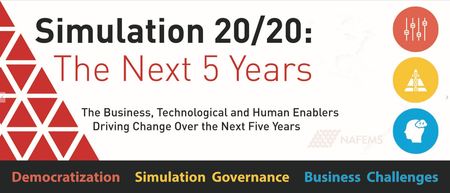Business Challenges:Vendor & End-User Collaboration
Common Automotive and Aerospace Requirements for Structural Optimization Commercial Software: Dialogue with Vendors
with presentations from The Boeing Company and BMW
The process integration approaches to structural optimization can be divided into two different approaches. One is to apply specific optimization tools whereas the other is to set up a process integration and design optimization (PIDO) tool and connect relevant software via interfaces. Both approaches have their merits and drawbacks.
Structural optimization applications experienced a significant growth in the past decade. Capabilities of commercial structural optimization tools increased considerably, now allowing for incorporating analyses ranging from stiffness and strength, to crashworthiness and durability, while handling thousands of adjustable parameter. These tools allow for fewer scripts and processes to be maintained, make the processes simpler, and make the learning curve more gradual. However, even when a specific optimization implementation is effective due to individual analyst’s efforts, structural optimization is often not suitable for general application from an enterprise standpoint.
Optimization frameworks (i.e., process integration and design optimization tools) have evolved considerably, allowing for coupling of processes, tools, and individual design parameters. Thus, the designer/CAE specialist is required to master the challenges arising from the complexity of such processes. Even if a specific PIDO implementation is effective, it is often not suitable for general application from an enterprise standpoint. Especially for multi-disciplinary optimization existing implementations compete and need to be biased.
To widen the scope of structural optimization applications at the enterprise level in the automotive and aerospace industries, and to increase the community of engineers using structural optimization effectively, the commercial structural optimization tools or optimization frameworks must:
- be easier to use;
- accommodate and interact with existing third-party and legacy tools;
- adapt on-the-fly modifications to the design parameters and optimization strategies;
- act as intelligent guides via dialog with the analysts in solving optimization problems: during setup of the problem, execution of the optimization procedure, and when reviewing the results. The tool or framework intelligence should be derived from the intermediate results and from efficient incorporation within the knowledge and expertise of existing in-house tools, processes, best practices, and design criteria.
In the PIDO approach, this demands high flexibility but strong interaction and interfacing capabilities of all involved tools (“democratization” of tools). Alternatively, the full optimization task might be glued into one existing optimization tool.
The presentation provided an enterprise view of the bottlenecks using real world design problems in automotive and aerospace industries. Current methods of addressing these bottlenecks will be presented, along with the proposed approaches to overcome them. The most important of the proposed approaches – the continuous dialog of industrial engineers with software developers at all stages of software development process.
Agenda
Welcome An Introduction to the Business Challenges "2020" Series
Common Automotive and Aerospace Requirements for Structural Optimization Commercial Software: Dialogue with Vendors
- Vladimir Balabanov, The Boeing Company
- Moritz Frenzel, BMW
Q & A Session
Close
Note: The presentation and recording files are only available to NAFEMS members. To access the password for this webinar, login with your member credentials, and then click here.



